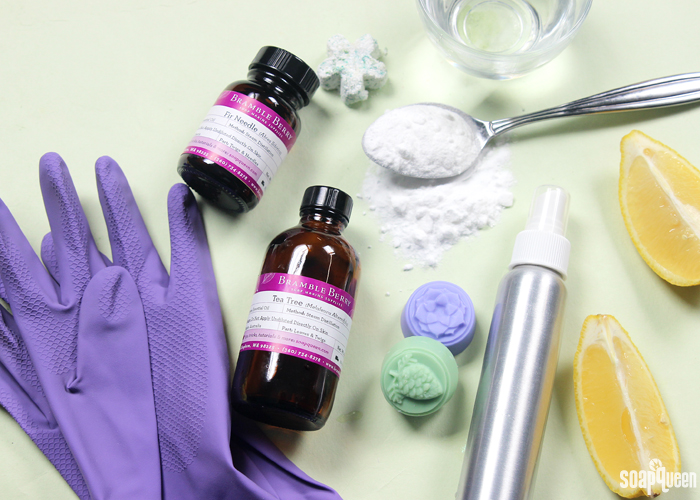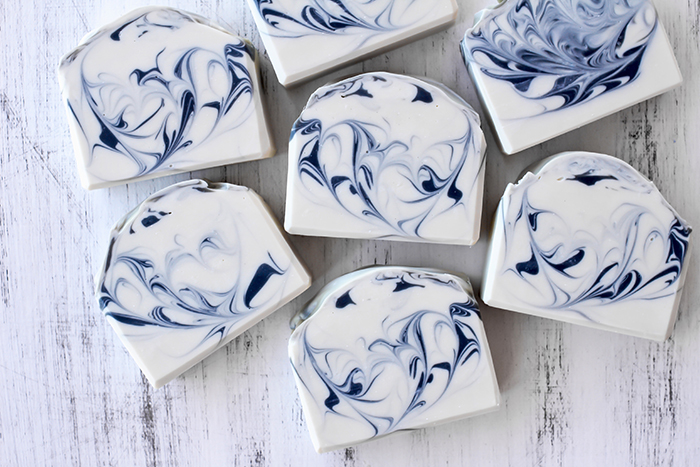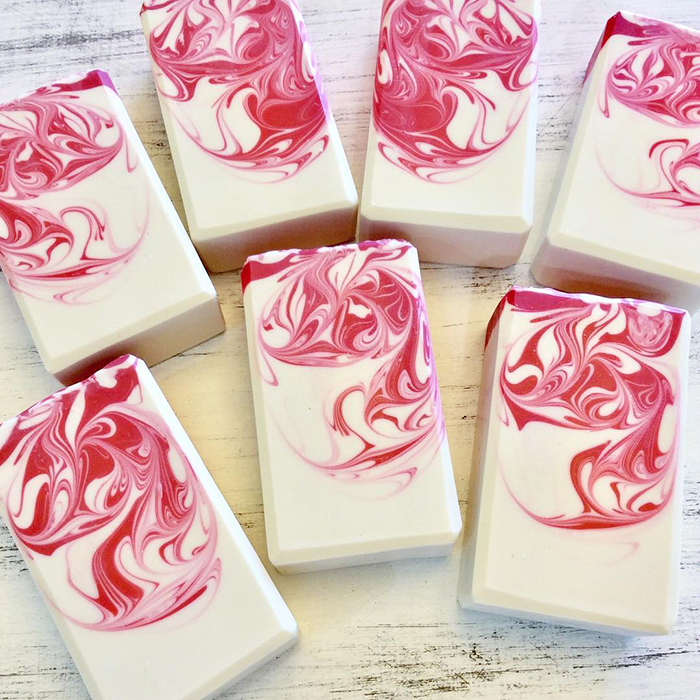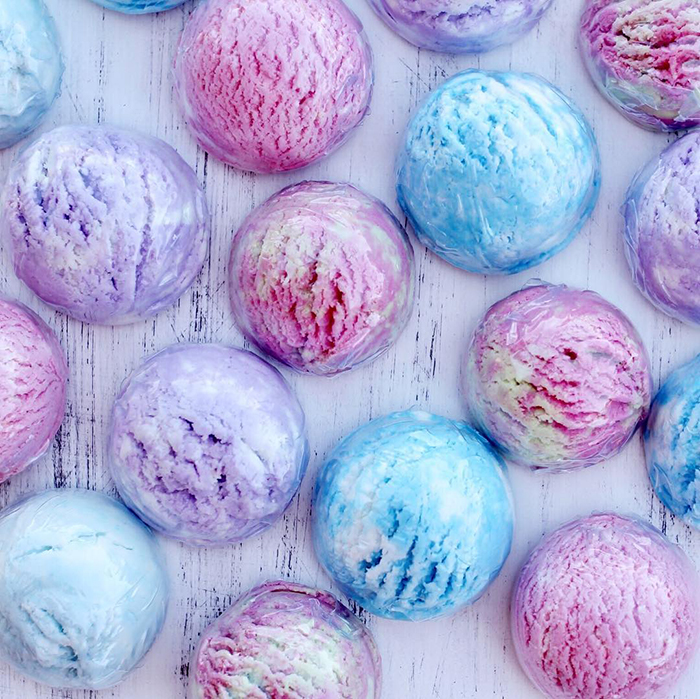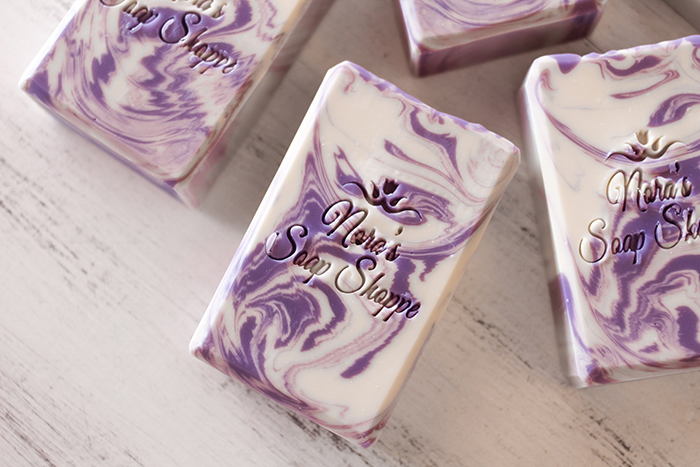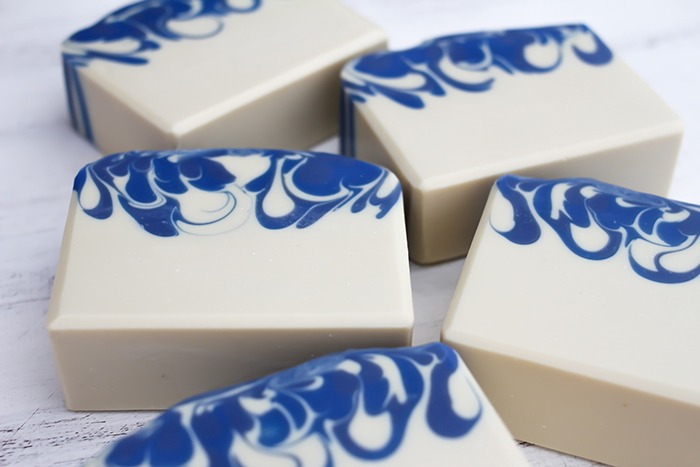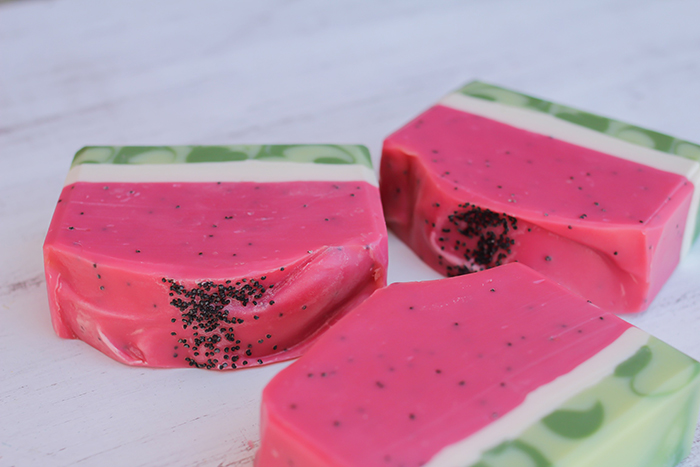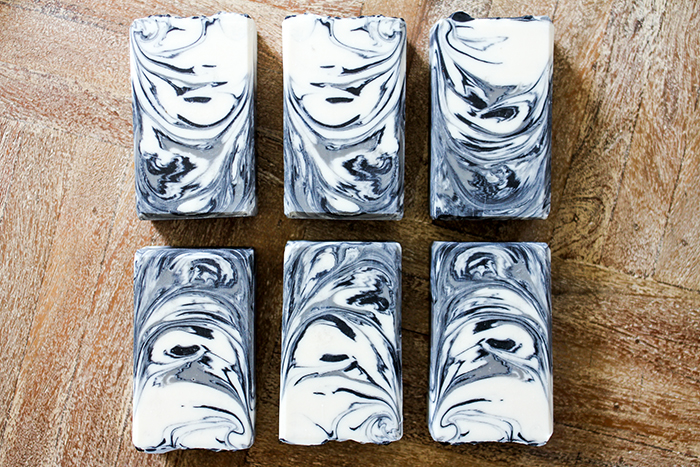It’s time for another Sunday Night Spotlight to discuss a product in detail, including fun recipes and in this case, blends. If you have any suggestions for a Sunday Night Spotlight, let me know in the comments below! To read about last weeks spotlight, click here, and learn all about a fun and easy botanical to use in your CP and M&P soaps. Are you ready for this weeks? Read on to learn all about Hungarian Lavender Essential Oil.
Search Results for: blend essential oils
What are Water White Fragrance Oils?
Welcome to another Q&A session about everything soapy and soap related. Check out our previous information product posts all about Nail Polish, Lip Balm, All Things Lotion, Preservatives, Melt and Pour Soap or Colorants. This week’s post comes to us from a few questions we’ve received from customers about maintaining clarity in Clear Melt and Pour Soap. Read on to learn more about these awesome scents that you can use in your bath and body products.
Sore Muscle Blends for Athletes
It’s been a while since we’ve talked about our Bramble Berry Athletic Club. We’re psyched to be able to donate to different charities around the country and support the athletic events of the BBAC! If you don’t know what the BBAC is, check out the team here! We’ve already made a handful of donations so far and we’re excited to make the rest of the donations this week! We’re putting the goody bags together as we speak (ahem…the team shirts are so cute) and we’re sending an essential oil blend for each member of the team to try out before, during and after their athletic event. Don’t worry, we’re going to share the EO blends with our Soap Queen readers too (we would hate to leave anyone out)!

BBAC Sore Muscle Essential Oils
Eucalyptus (Eucalyptus globulus) Essential Oil is distilled from the leaf of the Eucalyptus plant. Most people are familiar with its scent for the antiseptic uses. But what you may not know is that this very strong essential oil that is great for massaging into those sore muscles for nearly instant relief. It’s an anti-inflammatory that you’ll find in many creams and rubs.
Black Pepper (Piper nigrum) Essential Oil is distilled from the berries of the Black Pepper flowering vine. It gives a warm and soothing effect making it great for treating pains, strains and muscle aches when applied topically.
Lavender 40/42 (Lavandula angustifolia) Essential Oil is a natural lavender essential oil blend that like red table wine and is blended from a variety of batches every season to ensure stability in odor and strength. This oil is commonly used as a relaxant in oils, salts and rubs. This EO will be great for after the race. It’s even known as a healing agent is reputed to treat bites, stings, cuts and inflammation.
Peppermint (Mentha Piperita) Essential Oil causes a cooling effect on the skin which is good for circulatory stimulation. The essential oil can stimulate and energize you for your big event! [Read more…]
Essential Oil Feature: Star Anise
Star Anise is a sweet smelling essential oil that smells just like black licorice! Since I adore black licorice (I’m drooling right now thinking about salted licorice from Norway), of course I love this essential oil. It’s great for soaps, lotions, scrubs and soaps beautifully in cold process soap (who got one of our bars from the last soap swap?). Below is more information and reasons why you should try the fabulous essential oil.

Star Anise EO (Illicium verum) : Known as star anise, star aniseed, or Chinese star anise. Star anise is a naitive evergreen shub of China. Star Anise essential oil is steam distilled from the star-shaped seeds. The oil is very high in the chemical compound anethol, which is responsible for the distinctive aroma similar to liquorice. It is used to make many liquors, and (warning: random fact ahead!) is also the primary chemical source for the anit-influenza drug, Tamiflu. Some reports claim that over 90% of the annual harvest of Anise goes to the manufacture of Tamiflu.
Star anise can be used in chest rubs to help alleviate bronchitis, coughing, cold and other respiratory congestions as well as rheumatism. It can be used in massage oils to help relieve sore muscles, and works well in bug repellent sprays. It is also a relaxing oil, and helps relieve stress and insomnia. Star Anise blends well with rose, lavender and orange. Our Star Anise is lip safe at 1-3%, and makes a wonderful licorice lip balm!
Anise often arrives “frozen” in colder months. Not sure how to get a solid essential oil back to liquid? Read our handy tutorial here.
Night time blend: 4 parts Orange, 3 parts Anise, 3 parts Cedarwood, 3 parts Neroli, 2 parts Chamomile. Blend with a carrier oil for a massage, or drop into a hot bath.
Anise also blends awesome with Lavender (1:1), Spearmint (1:1), Orange (3:1), Chocolate Fragrance (1:1) and Patchouli (1:1).
Who is using Star Anise Essential Oil? What are your favorite blends?
Lori Nova’s Top Ten Essential Oils
 Big thanks to Lori Nova from The Nova Studio for this Guest Blog. Lori is going to be teaching her amazing swirl technique and colorant class at the Soap Intensive Weekend at Otion this year. Class attendees are in for a huge treat. Lori’s Guest Blog is below:
Big thanks to Lori Nova from The Nova Studio for this Guest Blog. Lori is going to be teaching her amazing swirl technique and colorant class at the Soap Intensive Weekend at Otion this year. Class attendees are in for a huge treat. Lori’s Guest Blog is below:
While preparing for my upcoming 2-Day Soap Making Boot Camp, I began to realize that there are some essential oils that are crucial to me for Cold Process Soap Making. Even though I occasionally use oils that are not on this list, without these oils I would be hard pressed to make amazing soap at an affordable price.
The reasons that I use/choose these oils time and time again is…
1) they smell great in CP soap,
2) they are reasonably priced and I can afford to buy a 16 ounce bottle of them, and
3) many of them blend well with each other, creating dozens or more of possible combinations.
Here’s my Top 10 List:
1: Lavender(use .7 ounces per pound of oil/fat)
2: 5-Fold Sweet Orange (use .5 ounces per pound of oil/fat)
3: Petitgrain (use .5 ounce per pound of oil/fat)
4: Lemon (use .9 ounces per pound of oil/fat)
5: Litsea Cubeba (use .5 ounces per pound of oil/fat)
6: Spearmint (use .5 ounce per pound of oil/fat)
7: Lime (use .9 ounces per pound of oil/fat)
8: Peppermint (use .5 ounce per pound of oil/fat)
9: Rosemary (use .5 ounce per pound of oil/fat)
10: Anise (use .5 ounce per pound of oil/fat)
My favorite COMBINATIONS with these ten Essential Oils:
~Lemon & Litsea Cubeba
~Lavender & Litsea Cubeba
~Lavender & Any Citrus (Orange, Lemon, Lime, etc.)
~Lavender & Any Mint
~Lavender & Rosemary
~Rosemary & Lemon
~Rosemary & Spearmint
~Lime & Spearmint (aka Mojito)
~Anise & Lavender
~Anise & Sweet Orange
~Petitgrain & Sweet Orange
~Peppermint & Lemon
~Peppermint & Spearmint (aka Doublemint)
How to figure out how much essential oils to use in Cp soap making:
Refer to “my list” above about for how much is recommended to use per pound of oil/fat.
How many pounds (of oil/fat) does your recipe have?
Let’s say you are making a 4-pound batch of oil/fats (fyi – 4 pounds = 64 ounces)
You multiply 4 x the amount of E.O. recommended.
To demonstrate, I’ll use Anise & Lavender.
Anise is recommended at .5 per pound of oil/fat.
So… 4 (lbs of oil) x .5 = 2.0 ounces of Anise (if you were using only Anise for the entire 4-lb batch).
and 4 (lbs of oil) x .7 = 2.8 ounces of Lavender (if you were using only Lavender)
Since you are using a combination of oils, divide each by 2.
So for Anise, it’s 2 divided by 2 = 1 (ounce of anise for the whole batch, in combo with lavender)
So 2.8 divided by 2 = 1.4 (ounces of lavender for the whole batch, in combo with anise).
So the end result for an Anise & Lavender Soap would be:
1 ounce of Anise AND 1.4 ounces of Lavender
Remember – these are guidelines for Cold Process Soap Making only and this is only a place to start. After making your first batch, if it comes out smelling more like one oil and you want it the other way around, feel free to adjust the amounts until you find exactly the scent you are looking for.
Well, I hope you’ve enjoyed this blog post and find it helpful in scenting your Cold Process soap.
Please feel free to post a comment below and share your favorite “can’t live without” essential oils for CP soap making and also the combinations you love the most.
Essential Oils Enhance Your Life

I pored over our sales reports for the last few months today. I realized that our essential oil line has been sadly underutilized in sales lately. I’m unsure if it’s because we started out as a fragrance oil company ten years ago and are mostly thought of as primarily a fragrance oil company. Or if it’s because our pricing/quality is judged as sub par. If it’s the latter, someone please put me out of my misery and tell me.
I’m half way through my certification for Medical Aromatherapy and loving the course! These are some things I’ve learned lately:
* Removing parts of the essential oil (for example, removing terpenes from essential oils to make them more friendly to perfuming) hurts the overall effect of the essential oil. The whole sum of the parts for essential oil is important to keeping their full therapeutic value.
* Famous researcher Paolo Rovestsi showed that inhaling essential oils of rose and lavender reduced feelings of depression and anxiety. Imagine combining that research with a brisk 30 minute run or walk outside to try and combat depression without prescription drugs!
* Only 1% of flowering plants produce an essential oil in any significant amount.
If you’d like to be introduced to Essential oils, Bramble Berry carries the neatest little starter essential oil starter kit. It has everything you need to start exploring the world of aromatherapy.
We also carry a huge line of essential oils, organic essential oils and synergy blends. I am currently burning the Calming Synergy Blend in my bedroom in the evenings and am loving the scent and effect.
Some ideas for improving your life through essential oils:
* put a 5 drops of Lavender Essential Oil on freshly laundered socks before tossing into the drier. Your entire load will come out smelling of calming lavender.
* fill a bowl with water. Put 15 drops of an uplifting essential oil like Peppermint, Bergamot, or Lemongrass into the water. Inhale deeply to wake yourself up and then soak a washcloth in the aromatic water. Wring the wash cloth out, toss it on the floor of your car and enjoy the fragrance all day as the washcloth dries out.
* Make a nighty-night linen spray by mixing 2 oz distilled water with 20 drops of Calming or Sleepy Time Synergy Blends. Shake well before use each and every time and of course, test on an inconspicuous place on your linens before dousing your entire bed. It’s impossible to predict which fabrics will bleed and fade.
There are many more uses for essential oils in soaps, lotions, face and body preparations and massage (to name a few!). Watch for more posts about using essential oils in your daily life. I am very inspired by my Aromatherapy Certification Course and look forward to sharing more essential oil tidbits over the next few months.
Advice from Our Customer Service Team
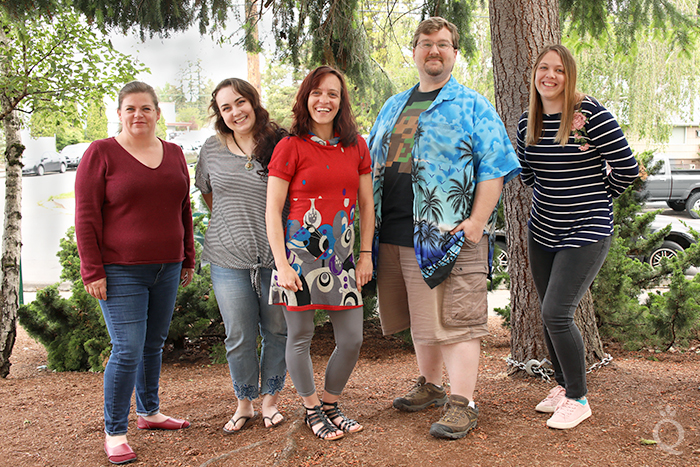
The Bramble Berry customer service team gets about 2,300 emails, chats, and phone calls a week. That number jumps to more than 5,000 during the busy holiday season. They answer questions about everything from goat milk soap to starting a small business. We asked the team what posts they share most often, as well as their best advice for beginners. Find their answers below.
Tina
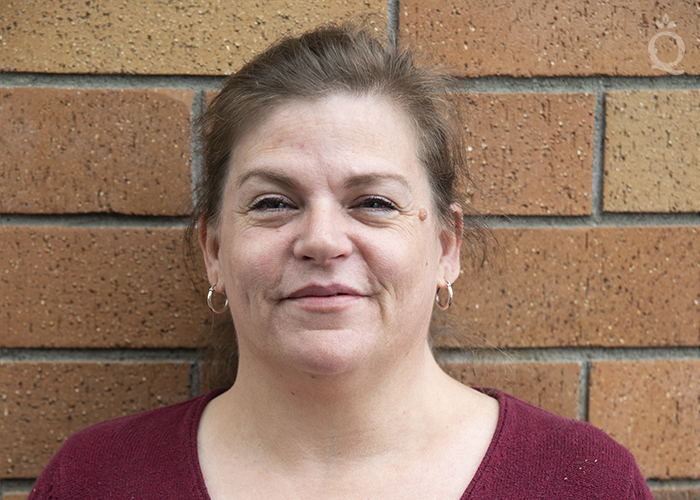
How long have you been with Bramble Berry?
7 years in July
What blog posts do you share with customers most often?
- How to Create Homemade Lotion Recipes
- Free Beginner’s Guide to Soapmaking: Cold Process
- Business Musings category
What advice would you give to someone just starting out?
Mistakes are part of the fun! Be open and okay with everything not turning out as you envisioned. Sometimes things turn out better. Also, maybe start with a basic recipe with a few ingredients first rather than jumping in with a 100% coconut oil cold process soap with a swirl design and raw honey as an additive.
![]()
Carla
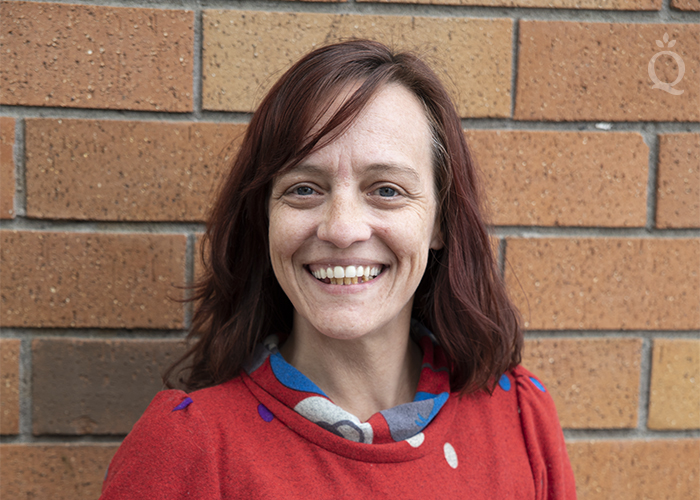
How long have you been with Bramble Berry?
6 years
What blog posts do you share with customers most often?
- Beginning Soaper Resource Roundup
- How to Create Homemade Lotion Recipes
- Soap Behaving Badly
- Soapy Mess-Up Quick Guide
What advice would you give to someone just starting out?
Anyone can do it! Trust yourself, have patience, and pay attention to the recipe.
![]()
Terah
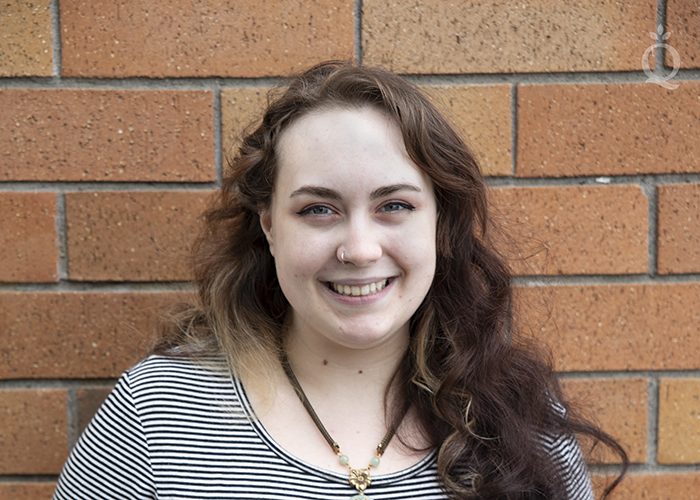
How long have you been with Bramble Berry?
4 years
What blog posts do you share with customers most often?
- Formulating Cold Process Recipes
- Explaining and Preventing Glycerin Dew
- How to Resize Cold Process Soap Recipes
What advice would you give to someone just starting out?
Don’t be afraid to make mistakes. Even if you’re following a recipe, there can be some trial and error before you get into the groove of things. We’ve all had failed batches, even after we become experts!
![]()
Matt

How long have you been with Bramble Berry?
2 years
What blog posts do you share with customers most often?
- Free Beginner’s Guide to Soapmaking: Common Soapmaking Oils
- Formulating Cold Process Recipes
- How to Add Lye to Milk for Cold Process Soap
What advice would you give to someone just starting out?
Don’t be afraid to experiment with your creations. You don’t always have to “soap inside the lines” – learn how to formulate a recipe and make changes to it, how to resize your batches, and get creative!
![]()
Chloe
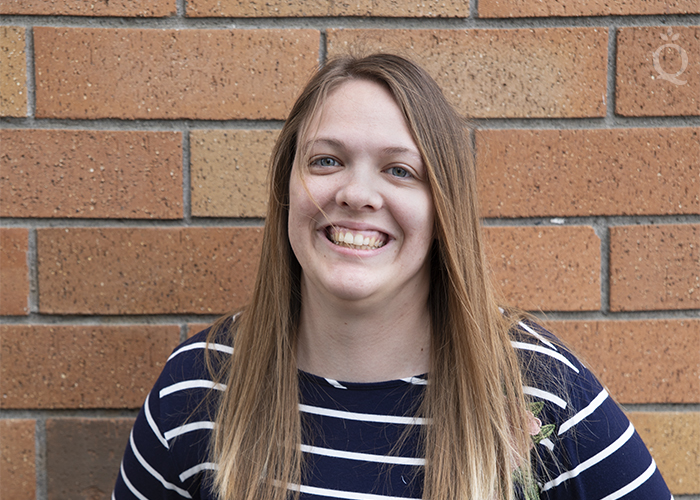
How long have you been with Bramble Berry?
Almost 2 years
What blog posts do you share with customers most often?
What advice would you give to someone just starting out?
For a beginner soapmaker my best advice would be to measure everything twice because once you make your soap you can’t go back – like baking a cake!
Using the Bramble Berry Fragrance Calculator
This post was updated in 2017 with the new Bramble Berry Fragrance Calculator design.
Have you ever started to make a batch of soap and realized you didn’t know how much fragrance or essential oil to use? Trying to figure out how much scent to add used to be a bit of an experimental process, and it didn’t always turn out so well. It’s frustrating to add too much of an expensive essential oil or not enough fragrance oil and end up with a beautiful but unscented bar of soap. Knowing how much to add can save you both time and money.
One of the best features on the Bramble Berry site is the Fragrance Calculator. It’s a handy tool that takes the guesswork out of soaping and gives you complete control over your recipes. Read on to learn how to make the Fragrance Calculator work for you.
Natural Cleaning Recipe Roundup
While January may be over, there is still time to give 2016 a fresh start. For the past two weeks, the blog has been full of all-natural cleaning recipes. These recipes were designed to help eliminate some of the chemicals found in store bought cleaners from your home. These Soap Queen recipes contain common ingredients that you may already have in your pantry, including baking soda and vinegar.
If you’re interested in creating cleaning products but aren’t sure where to start, the Top DIY Cleaning Ingredients post highlights my must-haves. These ingredients include essential oils, washing soda and salts. All these ingredients can be used in a wide variety of projects.
The two areas of my home that seem to collect the most grime are the kitchen and bathroom. The Multipurpose Cleaning Spray works great for both rooms. It’s made with a combination of borax, vinegar, lemon essential oil and white thyme essential oil. To learn more about borax, click here. The spray smells fantastic and leaves non-porous surfaces clean. Keep in mind that if you have granite or marble countertops, you’ll need to steer clear of vinegar and citrus essential oils, as they can etch the surface.
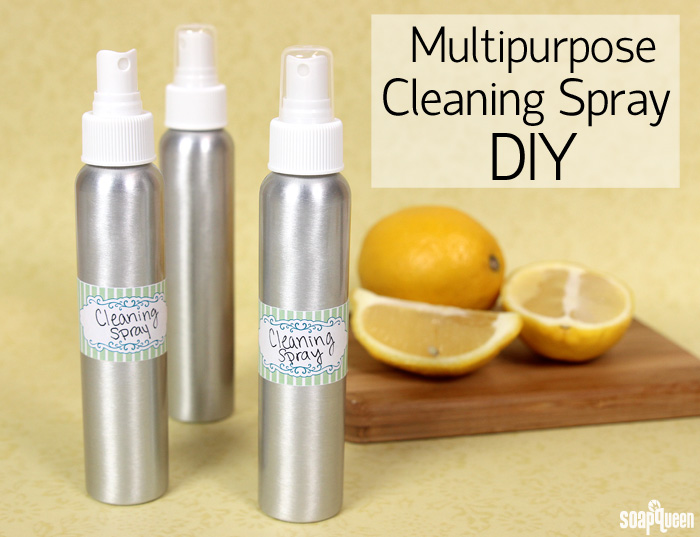
Facebook and Instagram Photo of the Week (Dec. 5th ~ 11th)
This week was all about seasonal scents that can carry into the new year. The Cleansing Orange Spice Salt Scrub is scented with 10X Orange Essential Oil and Cinnamon Sticks Fragrance Oil. The traditional holiday spice notes pair well with the fresh citrus notes. To match the orange scent, the scrub has orange peel and Racing Stripe Orange Mica. It will leave your skin feeling fresh and clean.
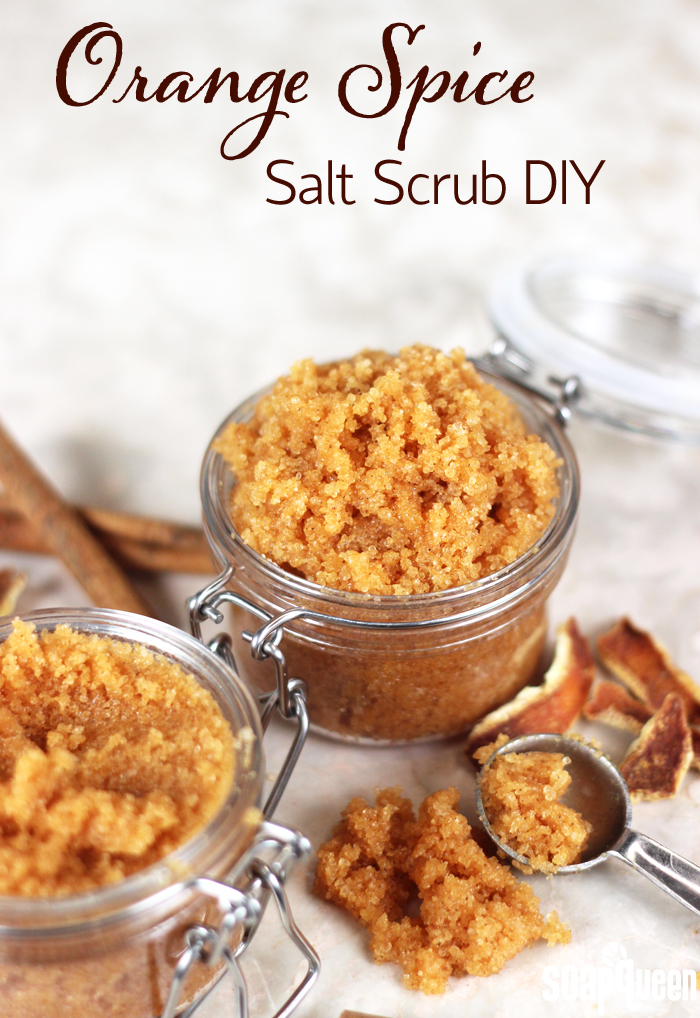
5 Quickfire Questions
 Melissa Hutcheson is the owner and and founder of the Joy of Soap out of Hayward, California. They take pride in making their bath products from organic, natural and sustainably grown ingredients. The fabulous Melissa was kind enough to send us two bars of her handmade creations; Rosy Cheeks Rosemary and Ginger Snap! They are both quality bars of soap with lovely lathers.
Melissa Hutcheson is the owner and and founder of the Joy of Soap out of Hayward, California. They take pride in making their bath products from organic, natural and sustainably grown ingredients. The fabulous Melissa was kind enough to send us two bars of her handmade creations; Rosy Cheeks Rosemary and Ginger Snap! They are both quality bars of soap with lovely lathers.Alright, gang, hold on to your seats! It’s time for 5 quickfire questions for Melissa. Here we go…
Melissa: I have always enjoyed arts and crafts and making things. I also used to travel quite a bit for work and realized that bath products in the hotels were not so nice for my skin. Once I started researching ingredients and their impact on skin and complexion I understood that I needed to make some changes. I found a great business nearby, The Nova Studio, where I could take a class on how to make soap. Lori Nova, the founder and owner of The Nova Studio is a great teacher and I admire the way she has developed her own niche and business to help others learn new skills. From there I started making soaps from scratch in my kitchen, storing them in the garage and packing them in the dining room. Several months later we built a website and sales started coming in slowly and have been growing steadily over the past year.
Melissa: The creativity involved. The opportunity to dream big, and to learn (by doing) how to turn the dream into a viable business. There is so much to learn, and so many people out there who want to help small businesses succeed if you just ask for guidance.
Melissa: The Synergy Blend Essential Oils. These are great essential oil blends that take the guess work out of discovering the right blend of oils. I also like the website layout. It is easy to navigate and provides clear details on all products – thank you!
Melissa: I am inspired by images and scenery; images in nature and in publications. I can easily spend hours exploring gardens, and when I travel I try to visit gardens to learn more about a region’s flora and how they are used in making local beauty products. Ideas come to me when researching ingredients, and from friends, family and people I interact with in all types of settings. Our Shaving Soap was inspired by my acupuncturist based on her knowledge of herbs and personal experience, and my husband inspired our Manly Man Soap which is now our most popular bar.
Melissa: Be patient. Be clear on your goals and set a realistic time line for achieving both small and big goals based on your time and financial resources. You may need to change course along the way in order to achieve a goal, and you may also discover a different focus as well. This is OK, and will ultimately produce a more successful business. Be open to asking and receiving help; it is OK to delegate tasks to people who have experience in areas where you do not. You will save so much energy and worry less if you realize that you do not have to do everything yourself. If you are not having fun anymore it’s time evaluate why and what you need to adjust, change, stop doing, delegate, etc. Stay inspired.
 Anne-Marie: Thank you so much, Melissa, for the inspiration and advice. We can’t wait to see what’s next for the Joy of Soap!
Anne-Marie: Thank you so much, Melissa, for the inspiration and advice. We can’t wait to see what’s next for the Joy of Soap! Learn more about the Joy of Soap here:
DIY Cleansing Balm with Avocado Oil
🌿 Embrace Moisturized, Protected Skin with DIY Cleansing Facial Balm!
Unmask your natural beauty with this easy-to-make, cost-effective Cleansing Balm! Designed to seamlessly melt away makeup, this balm stands out as a practical alternative to commercial formulas. For those new to the world of solid cleansing balms, consider this your gateway to a realm of skincare enriched with nourishing ingredients. 🌾🍐
This project is fueled with a mixture of lightweight Avocado Oil, soothing Chamomile Extract, and enchanting Natural Juicy Pear Fragrance Oil, allowing you to experience a symphony of refreshing and hydrating sensations. This formula is engineered to loosen makeup effortlessly and ensures that the balm washes away without leaving any greasy residue. 💧🌟
The instructional video included in this blog post is your visual companion to crafting this smooth cleansing balm, guiding you through each step with precision and clarity. 🎥
What You’ll Learn:
- How to blend essential ingredients like Emulsifying Wax and Polysorbate 80 for a smooth application.
- The art of incorporating scents and preserving agents, like the Natural Juicy Pear Fragrance Oil and Optiphen, to enhance the cleansing experience and ensure your product remains mold and bacteria free.
- Detailed application methods focusing on areas with stubborn makeup.
Benefits of this Cleansing Balm:
- Holistic Care: The combination of Avocado Oil and Chamomile Extract nurtures your skin, offering a holistic cleansing experience.
- Eco-Friendly & Cost-Effective: This DIY approach grants you the freedom to control the quality and quantity, proving to be an eco-conscious, economical choice.
- Customizable Scent: The recipe can be modified to include your preferred fragrance or be left unscented.
Whether you’re a seasoned skincare enthusiast or stepping into the world of DIY skincare, this cleansing balm promises a journey of creativity with a useful end product. So why wait? Dive in, create your personalized cleansing balm, and elevate your skincare routine! 🍃💄
Remember, once your skin is free from makeup, follow up with a DIY facial oil to lock in the freshness and let your skin breathe freely. Enjoy the path to clearer, happier skin!
Citrus and Shea Soap Project
This natural cold process recipe is scented with Orange 10X Essential Oil. It gives the bars a bright and cheery scent and a lovely natural color.
The batch is made with Raw Shea Quick Mix. It’s a palm-free blend of oils that includes raw shea butter, babassu oil, and sweet almond oil. Our exclusive Quick Mixes make the process quick and easy – find all the options we offer here.
Interview with Nora’s Soap Shoppe
Nora with Nora’s Soap Shoppe is well known in the soapmaking community. Her wispy swirl designs and expert use of color are instantly recognizable when you’re scrolling social media. She’s also known for her positivity and kindness – she makes sure to let people know when she loves their creations. Learn more about how Nora got started, what inspires her, and her soapmaking tips.
How long have you been making soap and how did you get started?
Back in 2010, I started dabbling in melt and pour soaps. It was such a joy to create handmade soaps for my family knowing what ingredients I put in. By 2012, I transitioned to cold process soapmaking. I became so mesmerized by the whole process of cold process soapmaking that I spent many hours and months researching and learning all there is about this technique. I came across the lovely Anne-Marie, the Soap Queen, online. I watched her first four episodes of cold process soapmaking and couldn’t resist purchasing Anne-Marie’s book, Soap Crafting. Having a resource that gave me the foundations of soaping techniques, safety, equipment, methods, SAP values, etc., was truly valuable to my learning journey as a soapmaker. I am a very visual learner, so having the book and tutorial videos accessible to me was very helpful.
What inspires you to create?
What surprised me the most was the creative side that blossomed in me I really didn’t know I had until I started making soap. I think back to when I was around maybe 10 years old, my mom took me to a cake decorating class. My class project was to make a Barbie cake with a beautiful dress like Cinderella. I can still remember the enjoyment I felt decorating that beautiful cake with pink and white frosting. I think of this time with my mom when I decorate the tops of soaps. With that said, this moment in my life to this day inspires me to create.
You just never know what could be the foundation of inspiration for creating. Family, memories, travel, flowers, the weather – I like to always keep things simple and lovely using inspiration around me. I truly believe this is what makes your soaps that much more special and unique to your brand.
What advice would you give to makers just starting their businesses?
Research is key and learning all you can about handmade businesses in your area and state. Find out as much information as you can and understand it. This is my least favorite part, as at times it can be very confusing. Never be afraid to ask questions. We have a wonderful soapmaking community and there are many gifted and talented makers out there who are willing to give some helpful insight and guide you in the right direction.
Spend time creating a good quality product and know your costs, create a good marketing plan so in time you can become profitable in your business. Feeling confident and having the knowledge of your product is very important, too!
How did you come up with the name for your business?
Choosing a business name can be tricky and needs a lot of thought put in. It seemed that almost every name that I thought of wasn’t available. Basically, I thought to myself that I was always told I had a unique name, Nora, and being handmade soap was my main product, I decided on Nora’s Soaps. But the name still needed something else. The thought of owning my own soap shop one day is most makers’ dream and goal. So putting that into perspective, I added a little twist of an “e” and there you have it, Nora’s Soap Shoppe. Shoppe has a quaint feel, so it felt just right.
What is your favorite type of product to make?
My absolute favorite product to make is cold process soap. From my very first batch of soap, I knew there was something special about this whole process. There is something just so satisfying about watching the lye and oils mix together into a gorgeous creamy soap batter. I love creating hanger swirls – they have become my most favorite signature technique and they create a gorgeous wispy swirl in each and every soap bar.
What is your favorite Bramble Berry product and why?
My very first soap supply order was from Bramble Berry, and almost every other since. So this is a very difficult question because I love just about every product they have! What is my favorite? I’ll have to say their colloidal oatmeal. This was one of the first ingredients I ordered and I continue using today. It blends in so smoothly and I also love its benefits. I also must say that even though we were asked for one favorite, I must add in BB’s Lavender 40/42, which is a perfect lavender essential oil and a must-have for my Lovely Lavender Soap.
Tell us something unique about yourself.
I love everything nostalgia, taking things back to the artisan way of life. A strong focus on family, whom are the most dear to me. Many fond memories of being in the kitchen baking and cooking with my mother and still using family recipes to this day. Reading the classics such as Little House on the Prairie and Anne of Green Gables. I would even say that this nostalgia that I am drawn to inspired me to make and create soaps.
What are some of your other hobbies and interests?
If I am not spending time with my family or soapmaking, I am an avid scrapbooking queen. In this time of everything digital, I do enjoy to print out real photos and create beautiful meaningful scrapbooks for my family to enjoy. My scrapbooking creations are a conversation piece in my home when we are entertaining family and friends and to be able to share those memories is very special to me.
I also still love to ski with my family. I can’t keep up as fast as I used to, but I still love being up on the mountain and the feeling of peace and tranquility you experience is just so satisfying.
What is your number one soapmaking tip?
Stay positive! In anything you do there can always be a negative side. One thing I learned in the soapmaking world is just to stay positive and keep moving forward. Don’t let the haters and negativity get you down or affect your creativity. Soapmaking is a happy place for most of us, so keep positive, encouraging, and supportive people around you and keep doing what you love.
If you were to give one of your products to a stranger, what would you choose and why?
I would have to choose my Summer Melon Soap. Summer Melon is loved by just about everyone with its juicy, fruity appearance and it smells absolutely scrumptious. I give credit to the Soap Queen and Bramble Berry for the inspiration of this particular soap. I use my own recipe but follow the creativity of the design posted on their tutorial. I don’t think this soap creation will ever go out of style because of the gorgeous watermelon soap creations I see season after season. It is a perfect summer soapy treat for all. 🍉
Have you ever experienced a soapy fail? How did you work through it and what did you learn?
Never be in a hurry. When you are in a hurry, you could miss the most crucial steps in soapmaking. Even your research on particular ingredients matter. I had one soap batch fail that resulted from not reading the reviews and the description of the fragrance oil I used. I got my soap mixture ready then added a gorgeous purple mica for color. Now comes the fragrance oil, so I poured it into the mixture and oh my goodness! The color started changing to a most awful looking dark brownish greenish color. I tried adding other colors hoping it would change some but nothing helped and it started to set up fast, so I poured it into the mold as fast as I could. I really thought it was a ruined batch but actually turned out to be a great bar of soap that my family ended up using, just not too pretty to look at. Always check the reviews on fragrance oils on how they behave and do small test batches in case your soap batch goes wonky. 😉
What do you love most about crafting bath and body products?
It’s such a joy to be able to go into my soapmaking happy place and be able to make and create something beautiful. Each maker has such a unique perspective and a beautiful touch to their soaps. I truly believe it’s a way to express ourselves and let our creative streak run wild. To have the opportunity to share such passion in our handmade products makes me love soapmaking even more!
Also, I have never been great with calculations and chemistry, and to now be great at it for soapmaking and creating recipes has become something I most love in my handcrafting journey. A continuously learning journey that keeps you coming back for more.
Thank you for taking the time to read my interview with Bramble Berry. I am so honored and feel so overwhelmed with joy that my passion for soapmaking has led me to such a wonderful company that supports us makers. I love supporting Bramble Berry because they have the best quality ingredients for all my soapmaking needs. Thank you, Bramble Berry! -Nora



